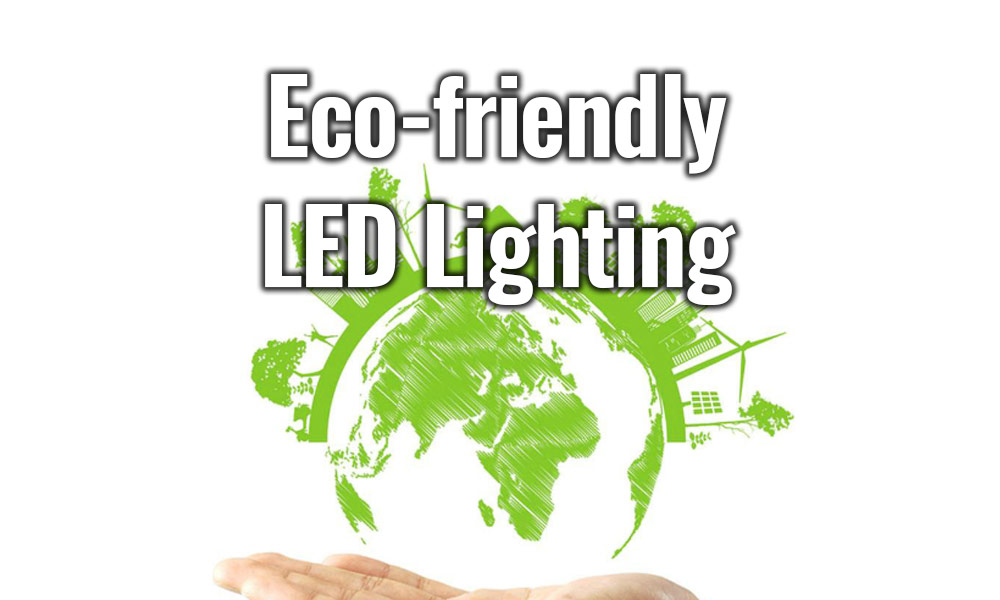
LED is an abbreviation for light emitting diode, and is made of a compound containing gallium (G a), arsenic (A s), phosphorus (P), nitrogen (N), and the like. When electrons and holes are recombined, they can radiate visible light, so they can be used to make light-emitting diodes. Used as indicators in circuits and instruments, or composed of text or digital displays. The gallium arsenide diode emits red light, the gallium phosphide diode emits green light, the silicon carbide diode emits yellow light, and the gallium nitride diode emits blue light. Due to chemical properties, it is divided into organic light-emitting diode OLED and inorganic light-emitting diode LED.
The important role of LED light sources in human life
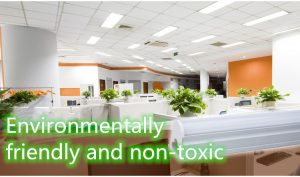 As the issues of environmental protection, energy saving and low carbon continue to heat up, and the global energy shortage continues, green lighting has become one of the hottest issues now. Incandescent lamps consume too much energy, and energy-saving lamps will produce mercury pollution. As one of the fourth-generation new energy sources, LE D lighting is favored by government companies for its energy-saving, environmental protection and low-carbon. Because of the invention of blue LEDs, the world today can use computer control to make LED emit millions of colors of light. Therefore, large LED display boards, traffic lights, and screen backlight systems can be seen everywhere on the road. , All have the figure of LE D. Specifically, LE D has a wide range of applications, which can be used for building exterior lighting, landscape lighting, signage and indicative lighting, indoor space display lighting, entertainment venues and stage lighting, video screens, vehicle indicator lighting, plant lighting, etc. The popularity of smartphones, tablets, and large LED TVs has also made LEDs more commonly used for backlight panels. In addition, modern times often use computers to control the intensity and color of LED lighting to simulate sunlight and plant greenhouses, so we can often see flowers of different seasons at the same time. Therefore, LED products have become an indispensable part of human civilization.
As the issues of environmental protection, energy saving and low carbon continue to heat up, and the global energy shortage continues, green lighting has become one of the hottest issues now. Incandescent lamps consume too much energy, and energy-saving lamps will produce mercury pollution. As one of the fourth-generation new energy sources, LE D lighting is favored by government companies for its energy-saving, environmental protection and low-carbon. Because of the invention of blue LEDs, the world today can use computer control to make LED emit millions of colors of light. Therefore, large LED display boards, traffic lights, and screen backlight systems can be seen everywhere on the road. , All have the figure of LE D. Specifically, LE D has a wide range of applications, which can be used for building exterior lighting, landscape lighting, signage and indicative lighting, indoor space display lighting, entertainment venues and stage lighting, video screens, vehicle indicator lighting, plant lighting, etc. The popularity of smartphones, tablets, and large LED TVs has also made LEDs more commonly used for backlight panels. In addition, modern times often use computers to control the intensity and color of LED lighting to simulate sunlight and plant greenhouses, so we can often see flowers of different seasons at the same time. Therefore, LED products have become an indispensable part of human civilization.
Comparison of LED light source and other electric light sources LED mercury-free element: 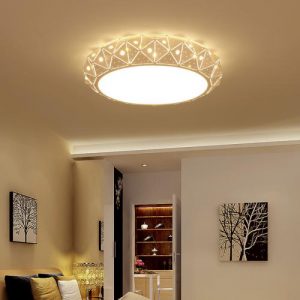 Mercury has a low boiling point and can evaporate at room temperature. After a broken and discarded light source is broken, it immediately emits mercury vapor to the surroundings, which can instantly make the mercury concentration in the surrounding air reach 10-20 mg / m3, which exceeds the maximum allowable concentration of mercury in the air specified by the state (0.01 mg / m3). M) 1000 to 2000 times. In addition, in all electric light sources that use mercury vapor to emit light, ultraviolet rays are generated by bombarding mercury vapor with electrons. This ultraviolet light is also an environmental pollution. Its main wavelength is 2537 Å = 2537×10-10m = 253.7nm, which is called UV-C ultraviolet. Approximately 60% of the electrical energy consumed can be converted into ultraviolet light, and other energy (about 40%) is converted into thermal energy. The fluorescent substance on the inner surface of the lamp tube absorbs ultraviolet light and releases visible light. Different fluorescent substances emit different visible light. The efficiency of converting “ultraviolet light” to “visible light” is about 40%. The LED lamp is a completely environmentally friendly product that does not contain mercury, and it also does not have ultraviolet radiation, but its driving power has extremely low microwave radiation. Using this new light source completely eliminates all kinds of pollution, so it can be called a true “green light source”.
Mercury has a low boiling point and can evaporate at room temperature. After a broken and discarded light source is broken, it immediately emits mercury vapor to the surroundings, which can instantly make the mercury concentration in the surrounding air reach 10-20 mg / m3, which exceeds the maximum allowable concentration of mercury in the air specified by the state (0.01 mg / m3). M) 1000 to 2000 times. In addition, in all electric light sources that use mercury vapor to emit light, ultraviolet rays are generated by bombarding mercury vapor with electrons. This ultraviolet light is also an environmental pollution. Its main wavelength is 2537 Å = 2537×10-10m = 253.7nm, which is called UV-C ultraviolet. Approximately 60% of the electrical energy consumed can be converted into ultraviolet light, and other energy (about 40%) is converted into thermal energy. The fluorescent substance on the inner surface of the lamp tube absorbs ultraviolet light and releases visible light. Different fluorescent substances emit different visible light. The efficiency of converting “ultraviolet light” to “visible light” is about 40%. The LED lamp is a completely environmentally friendly product that does not contain mercury, and it also does not have ultraviolet radiation, but its driving power has extremely low microwave radiation. Using this new light source completely eliminates all kinds of pollution, so it can be called a true “green light source”.
Mercury in ordinary light sources
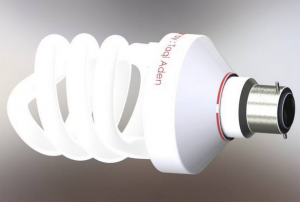 Mercury is an extremely toxic substance. However, most of the currently used high-efficiency electric light sources contain mercury. The mercury content of various electric light sources is shown in the following table: 26mm fluorescent lamps contain 25-45mg. Metal halide lamps contain 20-25mg of mercury. The high-pressure sodium lamp contains 12-14mg of mercury. Energy-saving lamps (10mm) contain 10-15mg of mercury. The mercury content of various LEDs is zero.
Mercury is an extremely toxic substance. However, most of the currently used high-efficiency electric light sources contain mercury. The mercury content of various electric light sources is shown in the following table: 26mm fluorescent lamps contain 25-45mg. Metal halide lamps contain 20-25mg of mercury. The high-pressure sodium lamp contains 12-14mg of mercury. Energy-saving lamps (10mm) contain 10-15mg of mercury. The mercury content of various LEDs is zero.
Radiation ratio of ordinary light source
1. The efficiency of fluorescent lamp is about 60% × 40% = 24%, which is about three to five times of the tungsten lamp with the same power. That is to say, there is still 100%-(40% + 24%) = 36% of ultraviolet rays which are not converted into other energy and are directly radiated on the glass tube wall. 36% of ultraviolet light passes through the wall of the glass tube and is approximately 94% depleted, so there may be 36% x6% = 2.16% of UV-C through the glass tube. UV-C is already considered as Deep UV to human body, which is extremely harmful. The United States recommends that humans not be exposed to fluorescent light for more than 16 hours. The damage of ultraviolet rays to the human body is the total amount accumulated over a lifetime. This is essential for girls who love beauty. 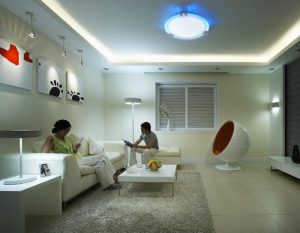
2. Energy-saving lamps and fluorescent lamps and microwave radiation. A Taiwanese scholar measured the microwave radiation of energy-saving lamps in his home. The results are as follows. When the lamp is not turned on, the microwave radiation measured in the room in the 0.5-3GHz bandwidth is 0.011 microwatts per square centimeter (0.011 μW / cm2). After turning on a 60W incandescent lamp, the microwave value. The microwave value is up to 50 microwatts per square centimeter (50 μW / cm2) after being replaced with a 15W energy-saving lamp, which is 5000 times that of an incandescent lamp. Then replaced with a 26W energy-saving lamp, its microwave radiation value is as high as 100 microwatts per square centimeter (100μW / cm2), which is 10,000 times that of incandescent lamps, which is almost higher than that of mobile phones. The electromagnetic wave intensity of a 15-watt energy-saving lamp is about 70 milli-gauss, and the electromagnetic wave intensity of a 26-watt energy-saving lamp is 80 milli-gauss. A 60-watt incandescent lamp is almost zero. Because the mechanism of fluorescent lamps and energy-saving lamps are exactly the same, the microwave radiation of fluorescent lamps will only be higher than that of energy-saving lamps, and never lower than that of energy-saving lamps. And this kind of microwave radiation can cause a feeling of dizziness. It is unknown what diseases will be caused. Japanese studies have shown that people who work for a long time in front of a computer have twice the chance of glaucoma than other people. You must know that computer LCDs also use cold-cathode fluorescent lamps similar to fluorescent lamps as backlights.
What are the advantages of LED light sources?
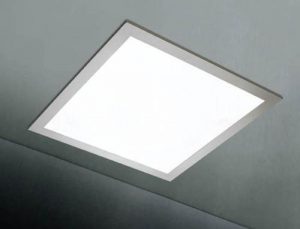 1. LED light source has high luminous efficiency
1. LED light source has high luminous efficiency
Comparison of luminous efficiency: incandescent light effect is 10-15lm, halogen light effect is 12-24 lumens / watt, fluorescent lamp 50-90 lumens / watt, sodium lamp 90-140 lumens / watt, most of the power consumption becomes heat loss. LED light effect: It can emit 50-200 lumens / watt, and has good monochromaticity of light emission, narrow spectrum, no need to filter, and can emit colored visible light directly.
2. LED light source consumes less power
LED single tube power 0.03-0.06 watts, using DC drive, single tube driving voltage 1.5-3.5 volts. The current of 15-18 mA is fast and can be operated at high frequencies. Under the same lighting effect, the power consumption is one ten thousandth that of incandescent lamps and one half that of fluorescent tubes. Japan estimates that if used LEDs with twice the light efficiency than fluorescent lamps replace half of the incandescent and fluorescent lamps in Japan, saving 6 billion liters of crude oil each year, a fluorescent lamp with the same effect of more than 40 watts, and the power of each LED is only 18 watts.
3. LED light source has a long service life.
 Incandescent lamps, fluorescent lamps, and halogen lamps use electronic light field radiation to emit light, filaments are easy to burn, thermal deposition, and light attenuation. LED lamps are small in size, light in weight, and encapsulated in epoxy resin. They can withstand high mechanical shock and Vibration, not easy to break, the average life span is 3-5 hours, and the service life of LED lamps can reach 3-5 years, which can greatly reduce the maintenance costs of the lamps and avoid the pain of frequent lamp replacements.
Incandescent lamps, fluorescent lamps, and halogen lamps use electronic light field radiation to emit light, filaments are easy to burn, thermal deposition, and light attenuation. LED lamps are small in size, light in weight, and encapsulated in epoxy resin. They can withstand high mechanical shock and Vibration, not easy to break, the average life span is 3-5 hours, and the service life of LED lamps can reach 3-5 years, which can greatly reduce the maintenance costs of the lamps and avoid the pain of frequent lamp replacements.
4. Strong safety and reliability
Strong safety and reliability. Low heat, no heat radiation, cold light source, can be safely touched, can accurately control the light type and light angle, light color, no glare, no mercury, sodium and other substances that may endanger health.
5. LED light source is environmentally friendly
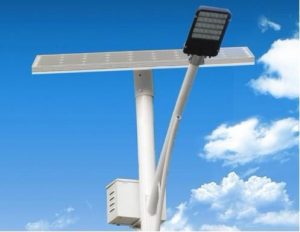 LED light source is environmentally friendly. LEDs are all solid light emitters, impact resistant and not easily broken, waste can be recycled, no pollution is reduced, and a large amount of harmful gases such as sulfur dioxide and nitrides, as well as carbon dioxide and other greenhouse gases are generated to improve people’s living environment. It can be called “green lighting light source.” There are currently three types of white LED technology: one, which uses the three primary color principle and three red, green, and blue ultra-high-brightness LEDs that can be produced into white at the ratio of 3: 1: 6 light intensity, two, using ultra-high InGan blue LED, a small amount of phosphor powder with yttrium diamond and pomegranate as the main body is added to the tube. It can generate yellow-green light under the excitation of blue light, and this yellow-green light can be combined with the transmitted blue light to form white light. LEDs use ultraviolet light to excite the three primary color phosphors or other phosphors to produce multi-color white light.
LED light source is environmentally friendly. LEDs are all solid light emitters, impact resistant and not easily broken, waste can be recycled, no pollution is reduced, and a large amount of harmful gases such as sulfur dioxide and nitrides, as well as carbon dioxide and other greenhouse gases are generated to improve people’s living environment. It can be called “green lighting light source.” There are currently three types of white LED technology: one, which uses the three primary color principle and three red, green, and blue ultra-high-brightness LEDs that can be produced into white at the ratio of 3: 1: 6 light intensity, two, using ultra-high InGan blue LED, a small amount of phosphor powder with yttrium diamond and pomegranate as the main body is added to the tube. It can generate yellow-green light under the excitation of blue light, and this yellow-green light can be combined with the transmitted blue light to form white light. LEDs use ultraviolet light to excite the three primary color phosphors or other phosphors to produce multi-color white light.
6. LED light source is more energy efficient
LED light source is more energy efficient. Of course, energy saving is the most important reason for us to consider using LEDs. Perhaps LEDs are more expensive than traditional light sources, but it takes one year’s energy savings to recover the investment in light sources, thereby achieving a net energy saving period of several times per year in 4-9 years.
LED UV Light Source
![]() LED UV curing lamp is a semiconductor light emitting device that directly generates ultraviolet light. The light source has a wavelength of 200nm to 450nm. In recent years, UVLED curing technology has received great attention from the world, and UVLED light sources have gradually been used to replace traditional mercury lamp light sources in many applications. UVLED is an electroluminescent diode. Compared with traditional UV mercury lamps, UVLED is more environmentally friendly, efficient and low energy consumption. It is a truly sustainable green industrial technology.
LED UV curing lamp is a semiconductor light emitting device that directly generates ultraviolet light. The light source has a wavelength of 200nm to 450nm. In recent years, UVLED curing technology has received great attention from the world, and UVLED light sources have gradually been used to replace traditional mercury lamp light sources in many applications. UVLED is an electroluminescent diode. Compared with traditional UV mercury lamps, UVLED is more environmentally friendly, efficient and low energy consumption. It is a truly sustainable green industrial technology.
UVLED Features
1. Single wavelength, high luminous efficiency and low energy consumption
UVLED can directly convert electric energy into UV light, and emits single-band ultraviolet light. The energy of light is highly concentrated in a specific ultraviolet light band. Now there are mature applications on the market that are 365nm, 385nm, 395nm, and 405nm. However, the emission spectrum of traditional UV mercury lamps is very wide, and only a part of the ultraviolet spectrum is effective for effective curing. At the same time, the photoelectric conversion efficiency is low and energy consumption is large.
2. Does not generate infrared and ozone
 Traditional mercury lamps generate infrared rays and emit a large amount of heat, which can easily cause damage to heat-sensitive substrates. UVLED is a cold light source, which can effectively prevent the substrate from shrinking and deforming due to overheating, and has a wider adaptability to materials. At the same time, UVLEDs used for ultraviolet curing are usually longer-wavelength ultraviolet light, so ozone will not be generated during curing, which can maintain a good working environment, which is safer and more environmentally friendly than traditional mercury lamps.
Traditional mercury lamps generate infrared rays and emit a large amount of heat, which can easily cause damage to heat-sensitive substrates. UVLED is a cold light source, which can effectively prevent the substrate from shrinking and deforming due to overheating, and has a wider adaptability to materials. At the same time, UVLEDs used for ultraviolet curing are usually longer-wavelength ultraviolet light, so ozone will not be generated during curing, which can maintain a good working environment, which is safer and more environmentally friendly than traditional mercury lamps.
3. Point and light, electronic control
UVLEDs do not need to be preheated like mercury lamps, and do not need to keep the lamp on all the time in order to maintain the lamp life and work efficiency. UVLED can turn on (off) the lights instantly, and the output energy can be freely set, and can be adjusted automatically with the speed of the machine, which is very energy-saving and simple and convenient to control.
4. Long service life and low maintenance cost
The LEDUV lamp has a service life of more than 10,000 to 50,000 hours, which is more than 10 times that of the traditional mercury lamp, and the light decays very slowly, and the service life is not affected by the number of switches. At the same time, the LED light source has no mercury and no accessories such as lampshades, so it requires almost no maintenance and reduces maintenance costs.
5. high use flexibility, small system size
LED light sources can be divided into point light sources, line light sources, and surface light sources, and the effective irradiation area can be customized. The size of the light source equipment is small, the irradiation device and related supporting devices are very compact, and there is no need for the large mechanical installation space and pipeline construction. Such characteristics make it suitable for various production processes and the production process is more efficient.
Future development of LED light source industry
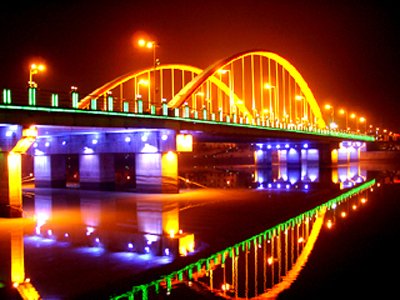 In the next few years, with the improvement of people’s living standards and the government’s efforts to promote LED energy-saving lighting, it will continue to increase and support from preferential policies. The potential of LED lighting market demand will be stimulated and will penetrate into all areas of human life. With the acceleration of the urbanization process in China, LED lighting products are enhanced with its excellent color expression, extremely strong control ability to change light and color, small size, easy to hide, and long life, energy saving, stability and other characteristics. LEDs are rich in color. Secondly, intelligent lighting has gradually become the new favorite of designers. Intelligent lighting can not only make the lighting more power-saving and environmentally friendly, but also use intelligent control to simulate the lighting effects of different scenes. Using infrared, video, motion, timing and other technical means to achieve intelligent lighting control, so as to achieve comfortable and efficient Lighting effect. Of course, in order to achieve intelligent lighting, we must move towards scientific lighting based on people; the second is to meet the needs of personalized and hierarchical multi-directional lighting; the third is to combine intelligent technology with new light sources and new lighting technologies; the fourth is to intelligent technology The concept of green and sustainable lighting needs to be carried through. Nowadays, LED light sources have become a hot topic in lighting design. LED products have many lighting advantages, and even subvert the significance of traditional lamps in outdoor lighting. At present, China’s large-scale industrial and mining, energy, road transportation, sports or exhibition venues and other related industries have huge market scales, and they continue to grow rapidly. The proportion of special lighting equipment in fixed assets investment in these industries will further expand, and the potential market capacity is huge.
In the next few years, with the improvement of people’s living standards and the government’s efforts to promote LED energy-saving lighting, it will continue to increase and support from preferential policies. The potential of LED lighting market demand will be stimulated and will penetrate into all areas of human life. With the acceleration of the urbanization process in China, LED lighting products are enhanced with its excellent color expression, extremely strong control ability to change light and color, small size, easy to hide, and long life, energy saving, stability and other characteristics. LEDs are rich in color. Secondly, intelligent lighting has gradually become the new favorite of designers. Intelligent lighting can not only make the lighting more power-saving and environmentally friendly, but also use intelligent control to simulate the lighting effects of different scenes. Using infrared, video, motion, timing and other technical means to achieve intelligent lighting control, so as to achieve comfortable and efficient Lighting effect. Of course, in order to achieve intelligent lighting, we must move towards scientific lighting based on people; the second is to meet the needs of personalized and hierarchical multi-directional lighting; the third is to combine intelligent technology with new light sources and new lighting technologies; the fourth is to intelligent technology The concept of green and sustainable lighting needs to be carried through. Nowadays, LED light sources have become a hot topic in lighting design. LED products have many lighting advantages, and even subvert the significance of traditional lamps in outdoor lighting. At present, China’s large-scale industrial and mining, energy, road transportation, sports or exhibition venues and other related industries have huge market scales, and they continue to grow rapidly. The proportion of special lighting equipment in fixed assets investment in these industries will further expand, and the potential market capacity is huge.


